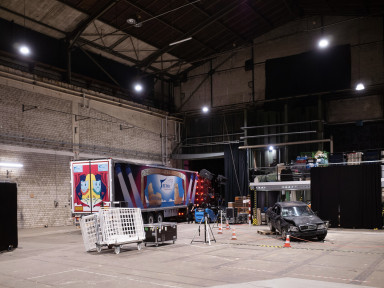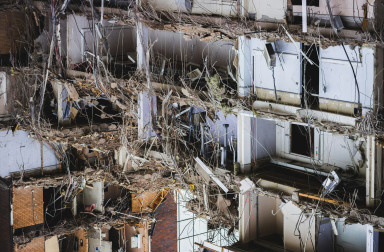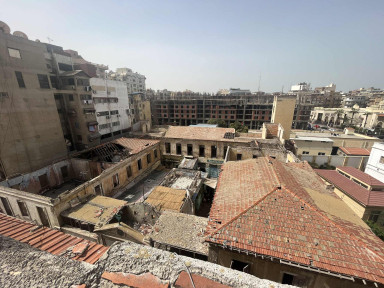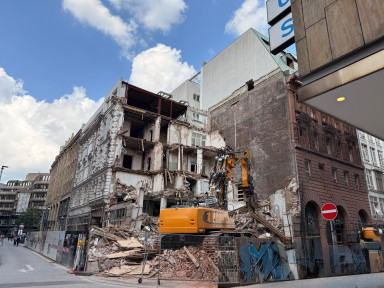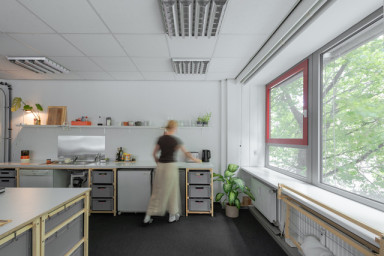Relational architecture
Performing architectural futures
This project investigates how architectural strategies incorporate the relationality and performativity of buildings, rendering them as continuously altered, unfinished socio-material processes rather than static and demarcated objects. Understanding an architectural transformation project as an amplifier of these conditions, the research examines the spatial transformation of the Kampnagel theatre in Hamburg as a case study. The originally industrial buildings, which were squatted by the free theatre scene in the 1980s, have undergone decades of continuous spatial transformation and appropriation by users, visitors, and artists, and are currently being transformed through a renovation and expansion project by the architectural firm Lacaton & Vassal, scheduled for completion in 2029. By asking how transformative strategies are being performed in contemporary architectural production, the project aims to find answers to pressing questions about how architectural practices can better address the increasing uncertainties of the built environment and to find ways to encounter and transform our vast existing building stock.
- architectural strategies
- adaptive reuse
- existing building stock
- performativity of matter
- relational architecture
- situated knowledges, practices, and materialities
Context
Current research in the field has made clear that architectural practices, as well as the sites they act upon and the buildings they design, can be understood as relational networks of heterogeneous actors, practices, regulations, technologies, and material flows that enact buildings simultaneously and in various sites.1 When exploring architectural strategies within this relational concept of practice, we must also recognize that most buildings today are in fact already ‘there’, and they continuously produce or are confronted with conditions that ought to be maintained, repaired, adapted, and reused across a span of practices ranging from the everyday to the highly professionalized. This means a building’s mere existence is its material transformation, from initial design and construction to the discarding of building materials. The research aims to understand how buildings themselves ‘intra-act’2 with the various forms of agency expressed by architects, builders, engineers, cleaners, owners, users, budget managers, visitors, etc.
Using the case study of the complex architectural transformation project of the Kampnagel theatre, the research examines how situated practices, knowledges, and materialities that constitute each building can be understood as architectural strategies. By recognizing the performative interplay of various forms of agency in architectural production, this project seeks to better understand how architectural transformation is implemented through pluralist relations and what spatial qualities these transformative architectural strategies promise.
Aims
The research aims to
render the building as a process - as an assemblage of situated practices, spatial strategies, and the building’s matter itself, thus expanding common definitions of architecture as a practice authored only by architects.
determine which strategies are used to negotiate architectural futures in an architectural transformation project, and what spatial qualities are promised.
find a methodology to account for the performativity of matter in architectural transformation practice.
understand how relational architectural strategies can be applied to improve architectural practices towards future transformation.
argue that architecture – as a building and as a practice – needs to be understood as relational and performative in order to deal with the increasing uncertainties and complex socio-material challenges facing the building sector today and in the future.
Research design
The study follows a multimodal research approach and is conducted through the triangulation of qualitative research methods. By iterating ethnographic, analytical, and interventive methods, the research follows the process of extending and renovating an existing building ‘in operation’ through stages of current use, future design, and the building site. Ethnographic (participatory observations, mappings, interviews) research is followed by an analysis of documents (architectural plans, process documentation, archival material) and of the building itself, to then intervene as a part of the artistic as well as architectural team, detangling implicit knowledge and practices that constitute architectural strategies. During the research process, the set of qualitative research methods is complemented by visual methods. To spatially comprehend the architectural transformation, design methods such as mapping, modelling, and technical drawing are applied and used as tools of analysis and interpretation.
Supervisors:
- Prof. Dipl.-Ing. Bernd Kniess
- Prof. Dr. Monika Grubbauer
